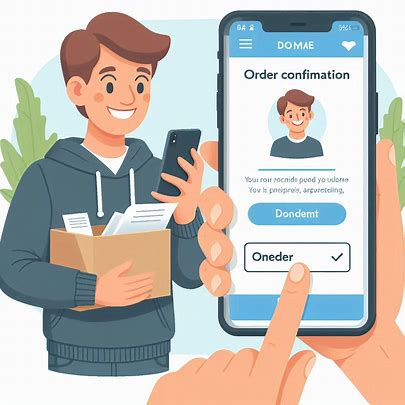Securing eCommerce Communications: Strategies for Business Continuity and Brand Protection
 Online shoppers expect seamless, secure interactions with their favorite brands. eCommerce businesses face immense pressure to deliver reliable communication channels that keep customers engaged and protected. From order confirmations to personalized offers, every touchpoint matters. Yet, cyber threats, system downtimes, and high-traffic surges can disrupt these connections, risking revenue and reputation. How can businesses ensure uninterrupted, trustworthy communication? The answer lies in robust strategies that prioritize platform stability, proactive monitoring, and brand integrity.
Online shoppers expect seamless, secure interactions with their favorite brands. eCommerce businesses face immense pressure to deliver reliable communication channels that keep customers engaged and protected. From order confirmations to personalized offers, every touchpoint matters. Yet, cyber threats, system downtimes, and high-traffic surges can disrupt these connections, risking revenue and reputation. How can businesses ensure uninterrupted, trustworthy communication? The answer lies in robust strategies that prioritize platform stability, proactive monitoring, and brand integrity.
Secure communication is the backbone of eCommerce success. Customers demand fast, reliable, and safe interactions, whether browsing products or receiving post-purchase updates. This is where ecommerce optimization services come into play, offering tailored solutions to strengthen digital infrastructure. Companies like createIT specialize in building resilient systems that withstand cyber threats and traffic spikes while maintaining customer trust. Their approach combines advanced technology with proactive strategies to keep communication channels open and secure, even under strain.
Challenges of Secure eCommerce Communications
Cyber threats loom large in the eCommerce world. Phishing attacks, data breaches, and malware can compromise customer information and erode trust. A single security lapse can lead to lost sales and damaged brand loyalty. Additionally, high-traffic periods—like Black Friday or holiday sales—put immense pressure on platforms. Server crashes or slow response times frustrate customers, leading to abandoned carts. Ensuring consistent communication during these moments is critical. Without a solid system, businesses risk alienating their audience and losing revenue.
Another hurdle is maintaining brand consistency across channels. Customers interact with brands through emails, social media, and websites, expecting a unified experience. Inconsistent messaging or delayed responses can confuse or deter them. Moreover, regulatory compliance, such as GDPR or CCPA, adds complexity. Businesses must secure customer data while adhering to strict privacy laws. Balancing these demands requires a strategic approach that integrates technology and vigilance.
createIT’s Strategies for Platform Stability
createIT tackles these challenges with a multi-layered approach to platform stability. First, they prioritize system resilience. By leveraging cloud-based infrastructure and load-balancing technologies, createIT ensures platforms can handle sudden traffic surges. Their systems are designed to scale dynamically, preventing crashes during peak shopping seasons. This means customers can browse, shop, and communicate without delays, even when demand spikes.
Security is another cornerstone of createIT’s strategy. They deploy advanced encryption protocols and secure APIs to protect customer data during transactions and communications. Regular security audits and penetration testing help identify vulnerabilities before hackers can exploit them. By staying ahead of threats, createIT ensures that sensitive information, like payment details or personal data, remains safe. This builds a foundation of trust that keeps customers coming back.
Beyond technical measures, createIT focuses on redundancy. Multiple server backups and failover systems guarantee that if one component fails, another takes over seamlessly. This minimizes downtime and ensures continuous communication with customers. Whether it’s sending order confirmations or responding to inquiries, createIT’s infrastructure keeps the conversation flowing.
Proactive Monitoring for Customer Trust
Trust hinges on consistency, and proactive monitoring is key to delivering it. createIT uses real-time performance tracking to monitor platform health around the clock. Tools like automated alerts and analytics dashboards detect issues—such as slow load times or unusual traffic patterns—before they escalate. This allows businesses to address problems swiftly, often before customers notice. Proactive monitoring not only prevents disruptions but also reinforces confidence in the brand.
Brand monitoring goes hand-in-hand with performance tracking. createIT employs tools to track brand mentions and customer sentiment across digital channels. By analyzing feedback, businesses can address concerns promptly and maintain a positive image. For instance, if customers report delayed emails, createIT’s monitoring systems flag the issue, enabling quick resolution. This vigilance ensures that communication remains consistent and aligned with the brand’s values.
READ ALSO: Revolutionizing Social Media Marketing: The Role of Technology and Social Media Marketing Panels
Why Trust Matters in eCommerce
Customers shop where they feel secure. A reliable communication system fosters loyalty by ensuring timely, accurate interactions. When order updates arrive promptly or customer service responds quickly, trust grows. Conversely, a single missed email or security breach can drive customers away. createIT’s focus on resilience and monitoring helps businesses avoid these pitfalls, creating a seamless experience that keeps customers engaged.
What sets successful eCommerce brands apart? It’s their ability to communicate reliably under any circumstance. By partnering with experts like createIT, businesses can protect their platforms and their reputations. Secure, uninterrupted communication isn’t just a technical necessity—it’s a competitive advantage. As online shopping continues to evolve, investing in robust communication strategies will remain essential for business continuity and brand protection.

